Savannah, 2017
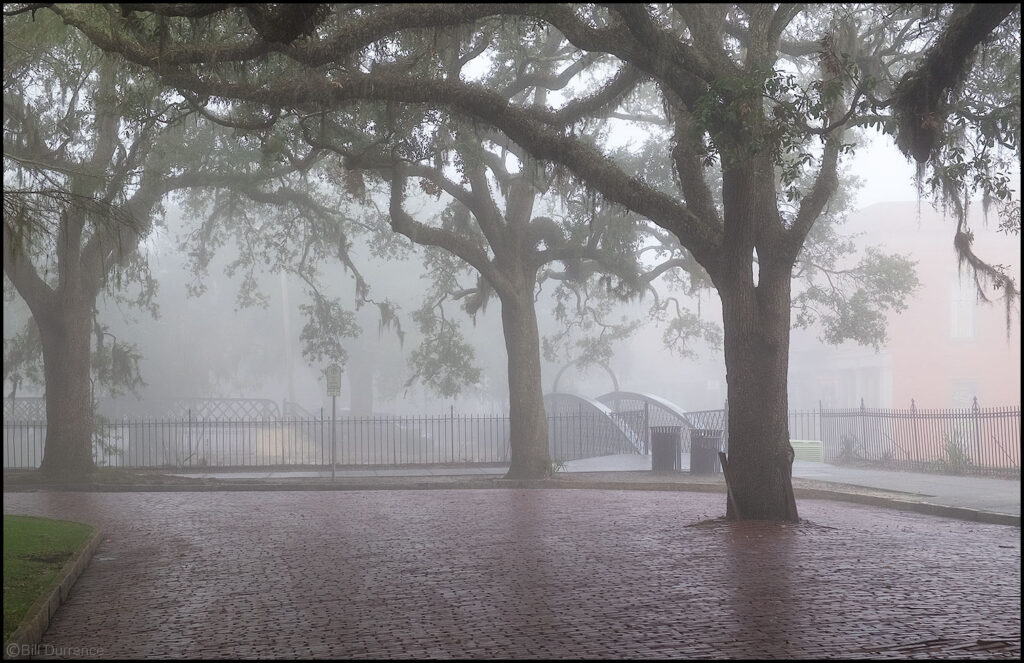
A convergence of phenomena conspired to give this local boy a frozen moment alone with his magical, normally tourist-laden, city.
For more of Bill’s photographs, go to https://www.billdurrence.com/index

A convergence of phenomena conspired to give this local boy a frozen moment alone with his magical, normally tourist-laden, city.
For more of Bill’s photographs, go to https://www.billdurrence.com/index
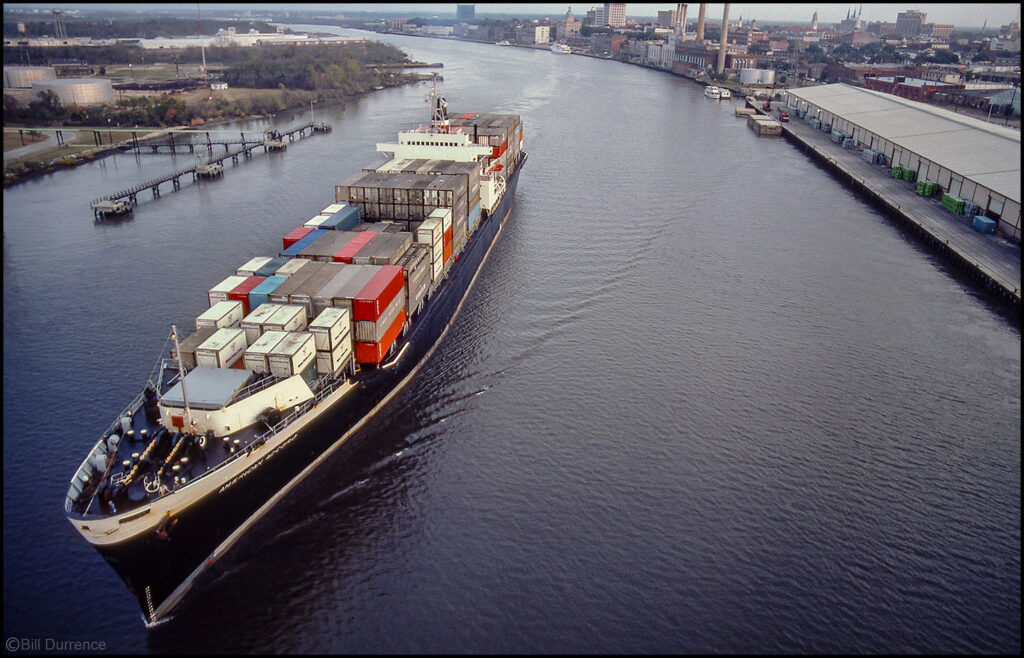
This ship looks pretty small, by today’s shipping standards, but Savannah was also smaller then. Missing from this view are at least four subsequent skyline-altering properties: the Hyatt, the Convention Center, the Westin, and Plant Riverside.
I don’t remember who the client was, but I was shooting a campaign that included several illustrations of port activity, and getting a hero shot of an arriving container carrier was on the “want” list. Today, just get a drone, but such remote options were not available then, for positioning or operating the camera, let alone having a preview of the composition. Yes, there was a time when you had to make photographs IRL.
Needed a chopper, but no commercial service was available in the area, and not enough budget. There were the Army helicopters at Hunter AAF, but rides on those were generally by invitation, not request. Fixed wing, door off, still a budget issue, but there was one elevated position possible–the old Talmadge Bridge, crossing right over the shipping lane.
The thing about the bridge was…no pedestrians allowed, and it was a two lane roadway with only a couple of feet on the outside of the lanes, so no pulling over and stopping.
I got a driver, drove over the bridge making sure no one was directly behind us, stopped just long enough for me to jump out and flatten myself against the side of the bridge (some open horizontal railings as I remember) while the driver continued on, to wait for a while in the then sparsely populated wildness of the Low Country. After a time, the driver came back across, stopping briefly to pick me up.
I was standing at the highest arc of the bridge where the roadway was a large section of open grating covering the entire width and length of the top. I could see the river under my feet. (I just had a little shiver remembering it.) I also remember a number of cars passing by while I tried to not get hit, them routinely yelling out, “Don’t jump!” Yet, no one ever stopped to see if I was OK, or reported me for being there.
Good light, nice ship, tide, and transit timing, everything came together, got the shot. But then I had to cross the bridge on the open grate, dodging traffic, to catch my ride. (Another shiver.)
For more of Bill’s photographs, go to https://www.billdurrence.com/index
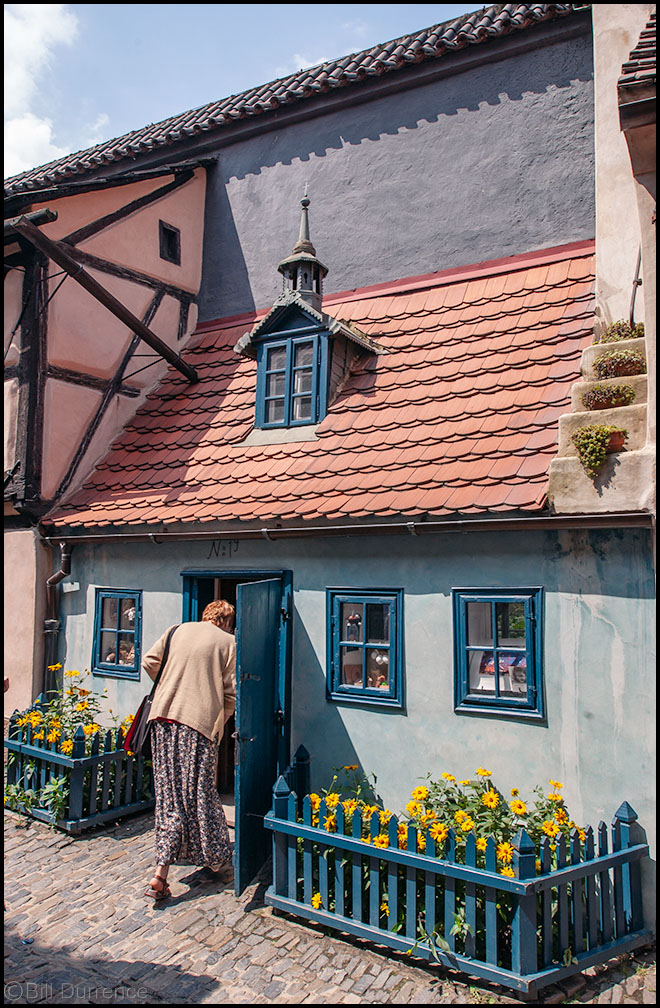
Golden Lane runs along the wall inside Prague Castle, with houses built against the wall in the 1500’s. Today those buildings are shops and displays. Nearby is St. Vitus’ Cathedral, the third iteration of a church on the site, named for a Christian saint from Italy because, purportedly, a relic of St. Vitus (his arm?) was gifted for the establishment of a Romanesque rotunda around 925 AD. Construction of the current basilica started in 1344 and only took 600 years to complete. We think public works projects take too much time today, which they often do, but we also often lack perspective.
St. Vitus was a vaguely familiar name to me because Mom would sometimes say someone was doing the “St. Vitus Dance,” which I don’t think she meant literally. Turns out, same guy as the church.
We visited Prague about a decade after the fall of the Iron Curtain. It was adapting to open society quickly, but pricing had not yet caught up to western standards, and service was warm and friendly. And pretty much everyone spoke English. One prominent memory is a dinner experience–cocktails, appetizers, meals and dessert, with wine–that could have been in a “Michelin-starred” bistro in Paris, except the bill was half what it would have been there.
Now if I could only find a way to show the scale of these little shops….
For more of Bill’s photographs, go to https://www.billdurrence.com/index
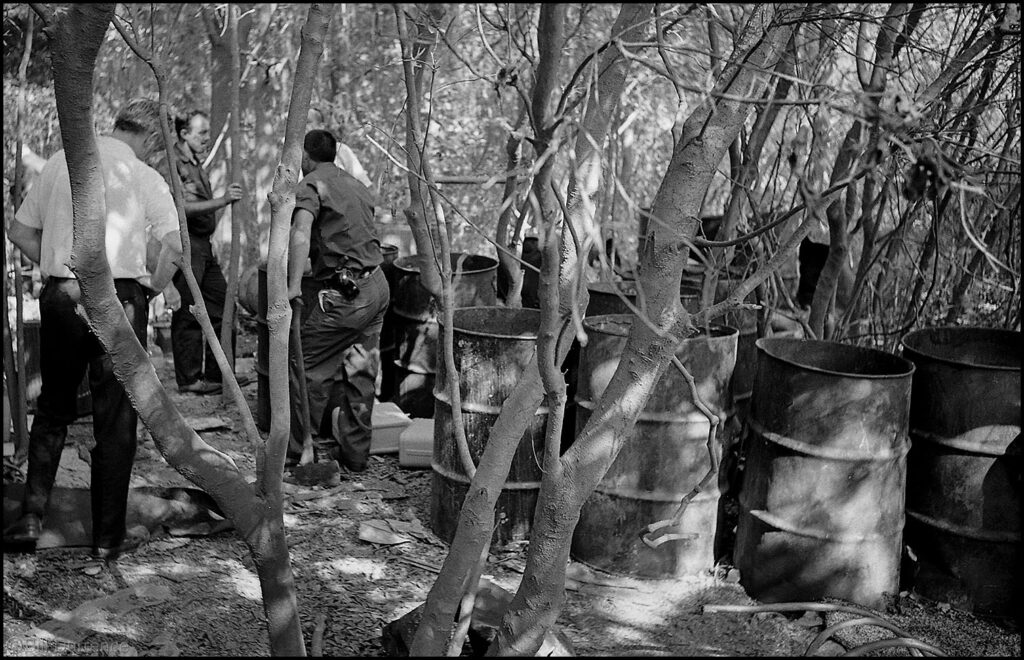
As I said in last week’s blog post, I was 18 and clueless, but also a brand new newspaper photographer, sometimes sent places I was not legally old enough to go, or clever enough to avoid.
Last week’s photograph of the little boy at the fence of doors was on a little-traveled street on the outskirts of Savannah with just a few scattered homes, at least some of them tar-paper shacks, best as I can remember. Today it’s a pretty heavily populated residential area, hemmed in by the arc of a freeway. No more than a few hundred yards away from that fence were patches of woods, and this, one of them, is where I was sent to meet a group of revenue agents who had a tip on an illegal whisky making operation.
When I arrived I found no one had been apprehended, but they did have the still. As I looked around trying to find an angle that would show the story as best as possible I made a couple of exploratory shots, including the photo above, while physically moving into the scene.
Suddenly one of the agents yelled at me, “Get down,” grabbed me and pulled me down, just as a bomb went off. They were dynamiting the still. Hey! This was the first still, and revenue op, I had ever been to. How was I supposed to know?
So any photograph of the still was lost, but the explosion had blasted all the sour mash up into the tree tops, and now it was raining moonshine.
Some context: This was 1966 in provincial America, in the Deep South. Photographers came to work in a coat and tie, every day. So now one of my two or three work uniforms “smells like a brewery.” And my camera is sticky. And at that point in my life I had not yet tasted the demon rum, so there was no upside.
Further context: I still lived with my parents (18, remember) and they never drank. They did not rail against the evil of it; they just didn’t do it, setting an example. So now I have to go home this way.
For more of Bill’s photographs, go to https://www.billdurrence.com/index
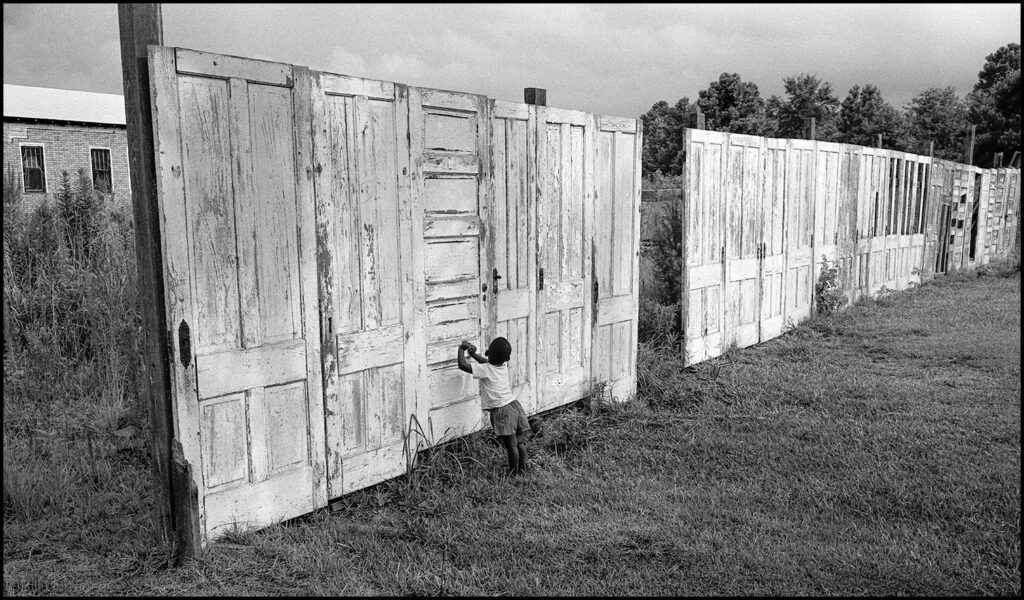
I was 18, and so clueless it embarrasses me now. But I was also a newly minted “staff photographer” at the Savannah Morning News and Evening Press. I think there were three reasons they hired me, not in any particular order: 1) I looked like I knew how to use a camera (I did not, but that may have been the beginning of my understanding of “Fake it ’til you make it.” 2) I would work cheap; and 3) my friend Bill Murton, who was leaving the job to move to Charleston, recommended me, and that saved them the trouble of having to look for someone.
The photography department then was a service bureau, seldom, if ever, initiating stories, The various other editorial departments (News, Sports, Society-later called Women’s, and I don’t know what now) turned in assignments and we covered them. The one exception for enterprise work from photographers was the regular need for “feature art.”
If page designs were looking a little gray because stories being run didn’t have photos or illustrations, an editor might ask for an interesting stand-alone picture, a “feature.” My boss, Buddy Rich, was trying to teach me about this part of the job, and encouraging me, while out on other assignments, to always be on the lookout for something curious, interesting, pretty that could be available on short notice to fill those “art” holes in the layout. I mentioned a fence made of old doors that I had seen a while back; his frustration with why I had not already made the photograph was obvious.
I made this shot that afternoon.
For more of Bill’s photographs, go to https://www.billdurrence.com/index
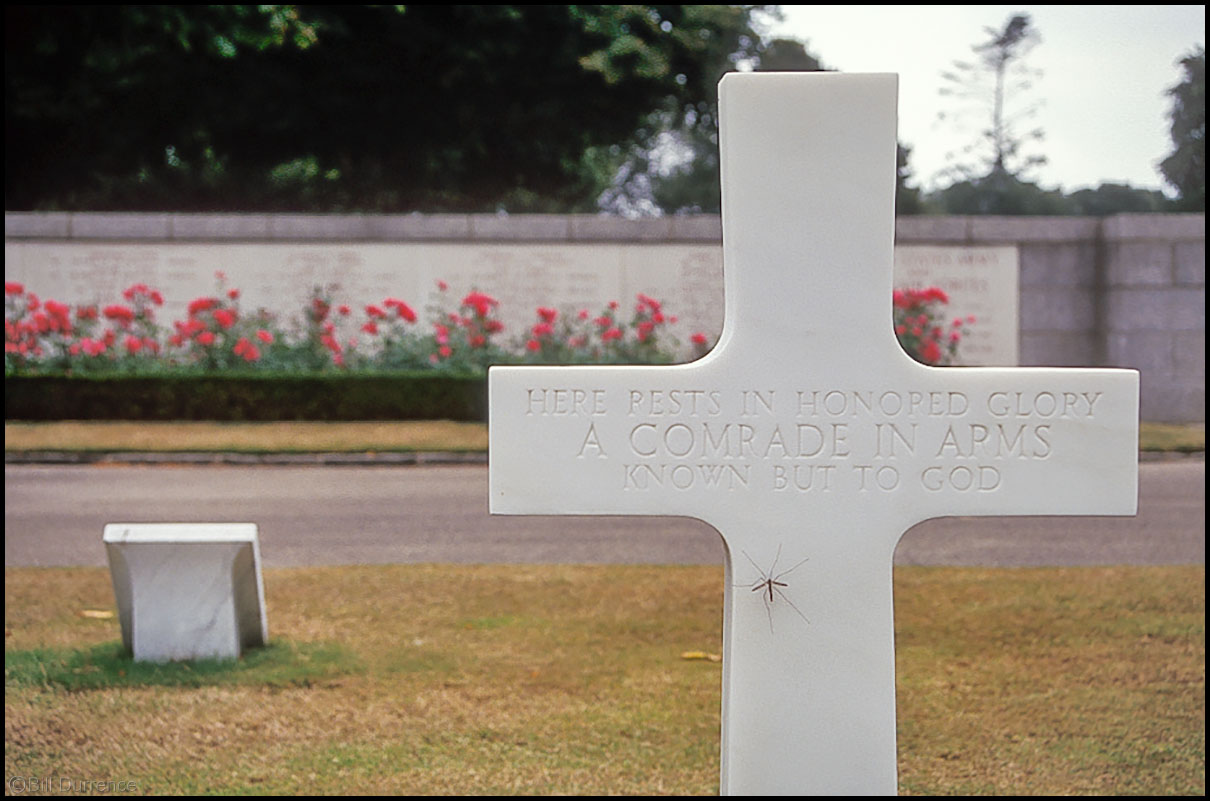
“…we cannot dedicate, we cannot consecrate, we cannot hallow this ground. The brave men, living and dead, who struggled here have consecrated it, far above our poor power to add or detract.” From The Gettysburg Address, Abraham Lincoln.
For more of Bill’s photographs, go to https://www.billdurrence.com/index
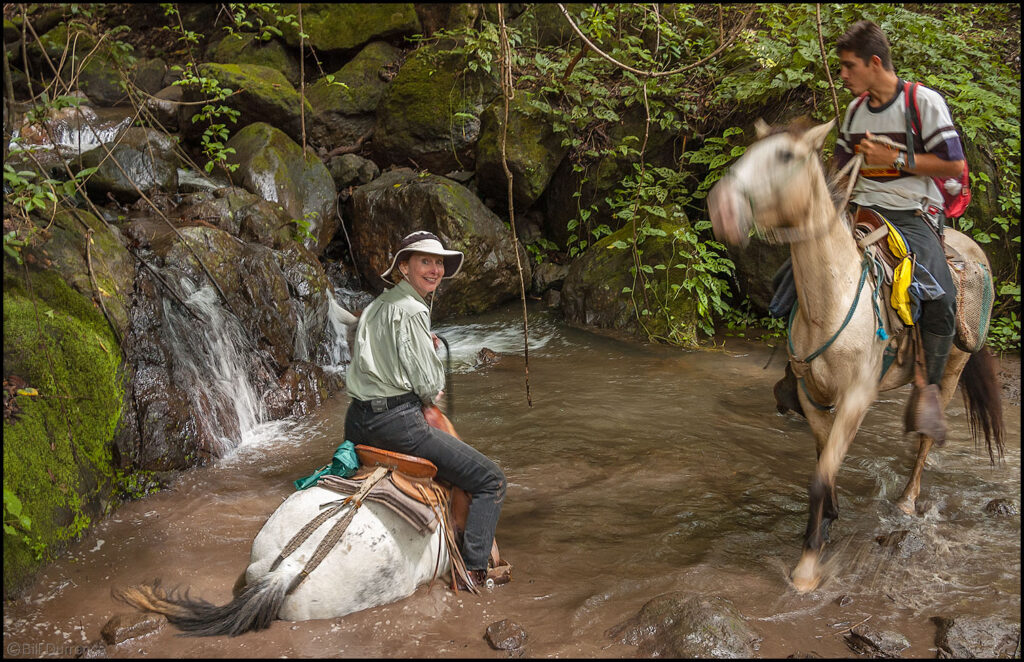
We were staying at a little boutique lodge, with just a few individual cabins scattered around hillsides along the western slope of La Cordillera de Tilarán, near the Monte Verde Cloud Forest. The couple who built, owned, and ran the lodge had a 15 year old home-schooled son, who had more practical knowledge about the world than many adults I know. He and a friend arranged for horses to take us on a ride through the mountains and forest, and to a beautiful waterfall where we could swim, and have a picnic.
It was a hot day, and the swim felt good, invigorating, but apparently Barbara’s horse felt left out of the cooling off option. As we were riding back out of the wildness, he simply stepped off the trail, into a deeper pool, and stopped, at which point all we could do was wait for him to be ready to move on.
For more of Bill’s photographs, go to https://www.billdurrence.com/index
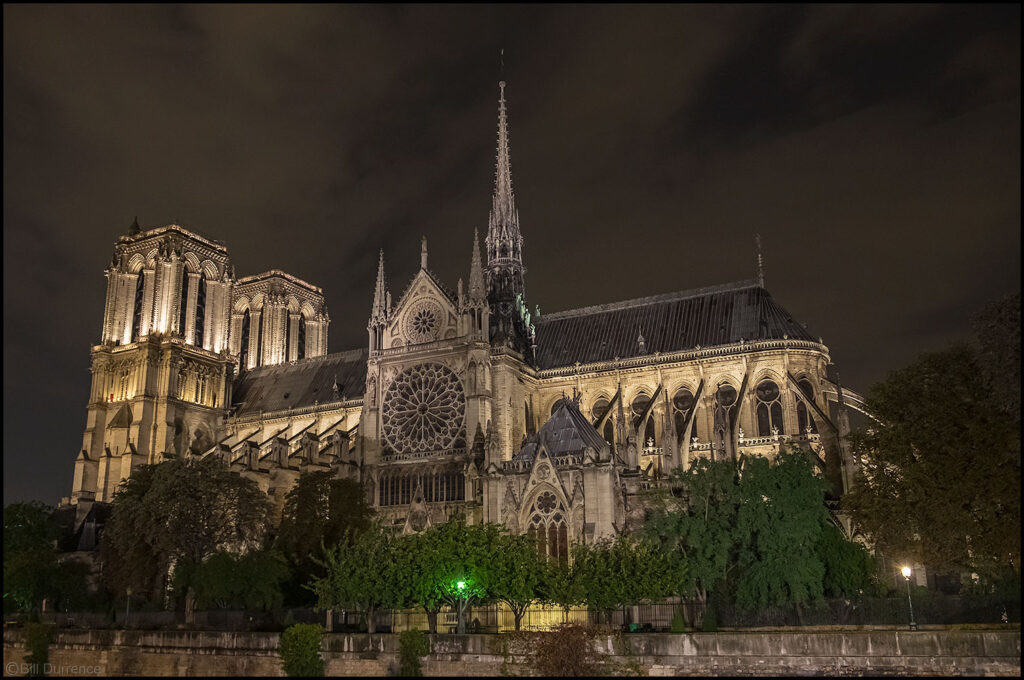
In 1988 I was hired by Nikon USA to work in their Nikon Professional Services department (NPS). I was one of about a dozen “tech reps” scattered around the US with the broad job description of working with the professional market–the photographers for newspapers and magazines, commercial studios, hospitals and medical schools, freelancers, etc.–to spread the gospel according to Nikon. Not to sell, but just to educate heavy, high-end users on ways to get the most out of the gear we made, calling on their businesses, and staffing media depots for loaning and repairing equipment at major media and sports events.
Within a week of starting work, the company introduced the N8008, which I think was the most revolutionary camera since George Eastman made his Kodak camera, pre-loaded with a 100 exposure roll of film, in 1888. Suddenly we had to train the market on a new concept: Matrix Balanced Fill-Flash; and a whole new way of using the camera. It was not the first auto focus camera, but the first that could regularly satisfy professional needs. In the milliseconds between pressing the shutter button and the shutter curtain opening and recording the image, the camera could focus the lens, calculate a sophisticated exposure based on referencing a database of 1000s of photographs, and modulate the flash output to look like natural light, softly opening the shadows, with little or no effect on the highlights.
A question one of my colleagues asked at the time was, “Who trains the trainers?” It was a turbulent few years, trying to learn the rapidly evolving technology, at a minimum a precursor of AI, and teach it at the same time. It was a bumpy road sometimes, but an amazing education, and looking back, it was a blast and I’m so glad I was there.
Before this technology was incorporated into automatic (and user modifiable) functions, using a flash well was complicated, leading to an attitude by many if not most serious photographers illustrated by an oft repeated phrase, “I only shoot available light, but sometimes the only light I have available is my flash.” Using the flash was a last resort.
These days I’ll use flash when it can help, but I’m still looking for the “available light” option, and sometimes that is temporal. And for some subjects, it would be hard to have enough flash. If you stand on the left bank of the Seine, across from Notre Dame, after dark, and wait…a Bateaux Mouches will be along shortly, brightly lighting up the cathedral. Be ready, composition already framed up and focused, shoot fast and continuously. As the barge moves, the lighting will move across the architecture revealing different nooks and crannies.
For more of Bill’s photographs, go to https://www.billdurrence.com/index
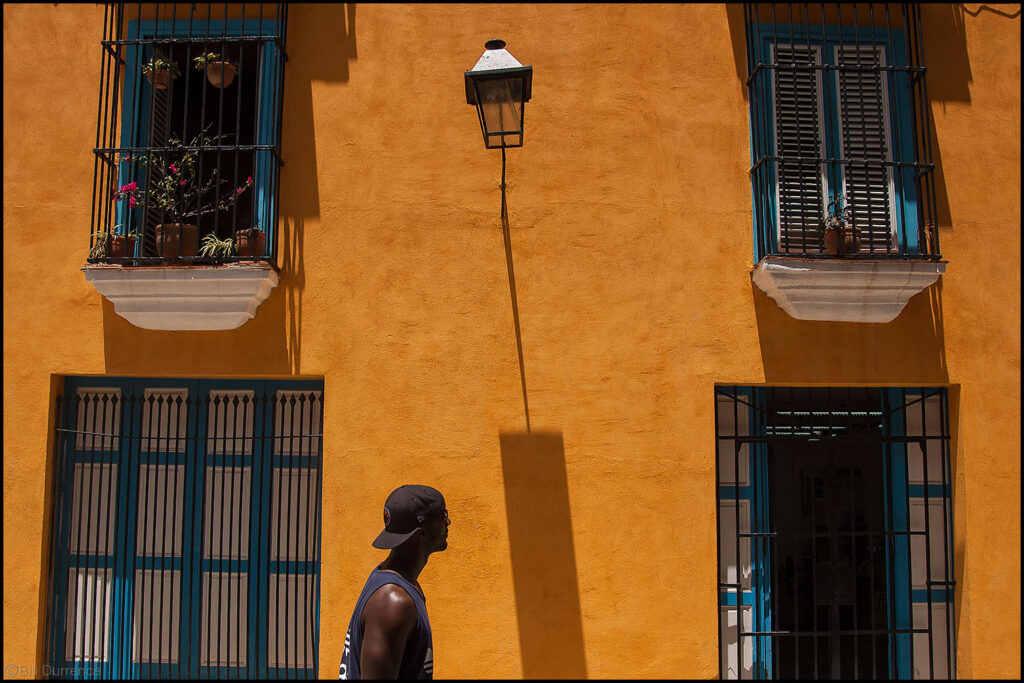
One of the “rules” for successful pictures, usually learned in the second tier of wading into a photographic education, after spending some inordinate amount of time trying to understand “f-stop,” is the injunction to avoid shooting in the middle of the day, opting for the prettier angle of the light early and late in the day. You just can’t make a nice photograph under the harsh overhead light and deep shadows of noon.
Riiiight…. You see, the thing about rules is….
For more of Bill’s photographs, go to https://www.billdurrence.com/index
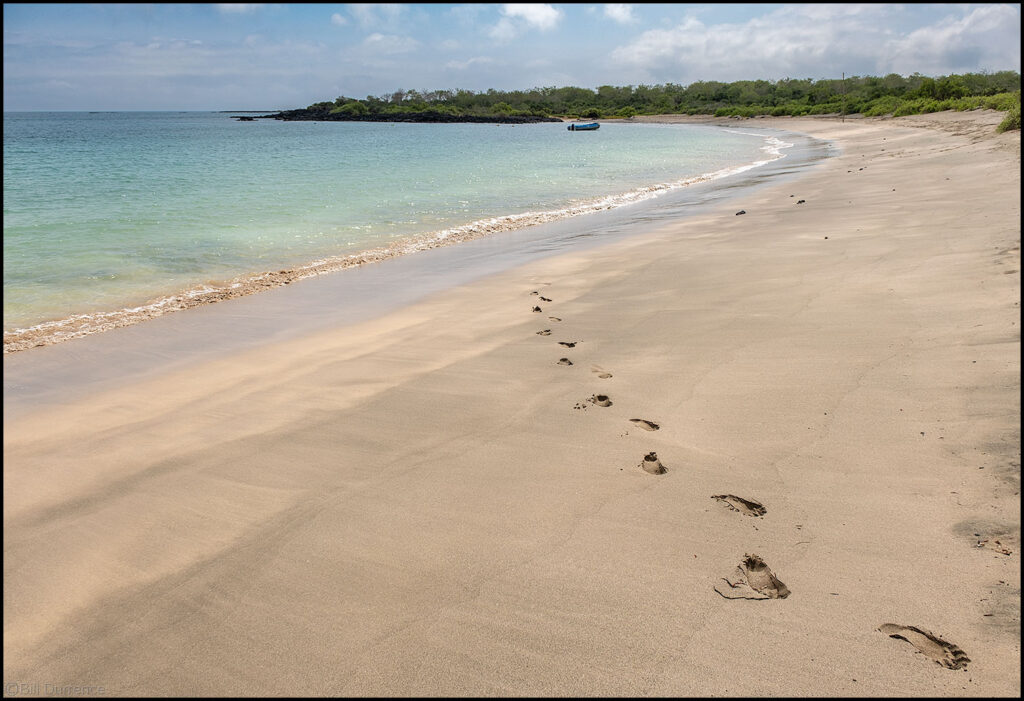
I sometimes have a Robinson Crusoe fantasy, for the solitude, not the hardships. I did say it was a fantasy. On many occasions I have claimed that, except for Barbara being in my life, I would be fine as a hermit, living in a cave. Of course there has to be a fast internet connection. And the truth is, I’d probably be bored stiff within a few days.
This photograph is a variation on tropical tourism cliches, with the compositional tactic of the C curve of the shoreline, sinuously, continuously looping the viewers’ eye, seducing the weekday, workday, everyday drudgery, suggesting that here would be a so much better place to be–calm, peaceful, quiet, alone. Of course the economics and logistics of getting to a place like this almost certainly means you will not be alone.
Reading some science fiction on a recent trip, a phrase jumped out at me, “…arranged to suggest geometries of endless longing.” (“Count Zero” by William Gibson) Sounds like the goal of advertising photography.
During the raging hormones’ stage of my adolescence I saw a movie, “Bird of Paradise” with Louis Jordan and Debra Paget. A young Frenchman goes home with a college friend, to the South Pacific, meets, falls in love with, and marries his friend’s sister, also the Chief’s daughter, the lovely Kalua. SPOILER ALERT! It does not end well. She is barren, and the island volcano is acting up, so she has to self-sacrifice by jumping into the volcano, to save her people.
And then there was the tragedy of the paradise Bali Hai, and beautiful Liat, daughter of Bloody Mary, in “South Pacific.” Apparently 1950’s Hollywood had, hypocritically I suspect, a problem with interracial affairs. Like the song said, “You have to be taught.”
Leaving all rationality aside, those films set the scene for another fantasy, coming down a white sandy beach, alone, toward me, a beautiful skinny girl with artificially darkened skin pretending to be Polynesian.
How dull might life be without imagination?
For more of Bill’s photographs, go to https://www.billdurrence.com/index